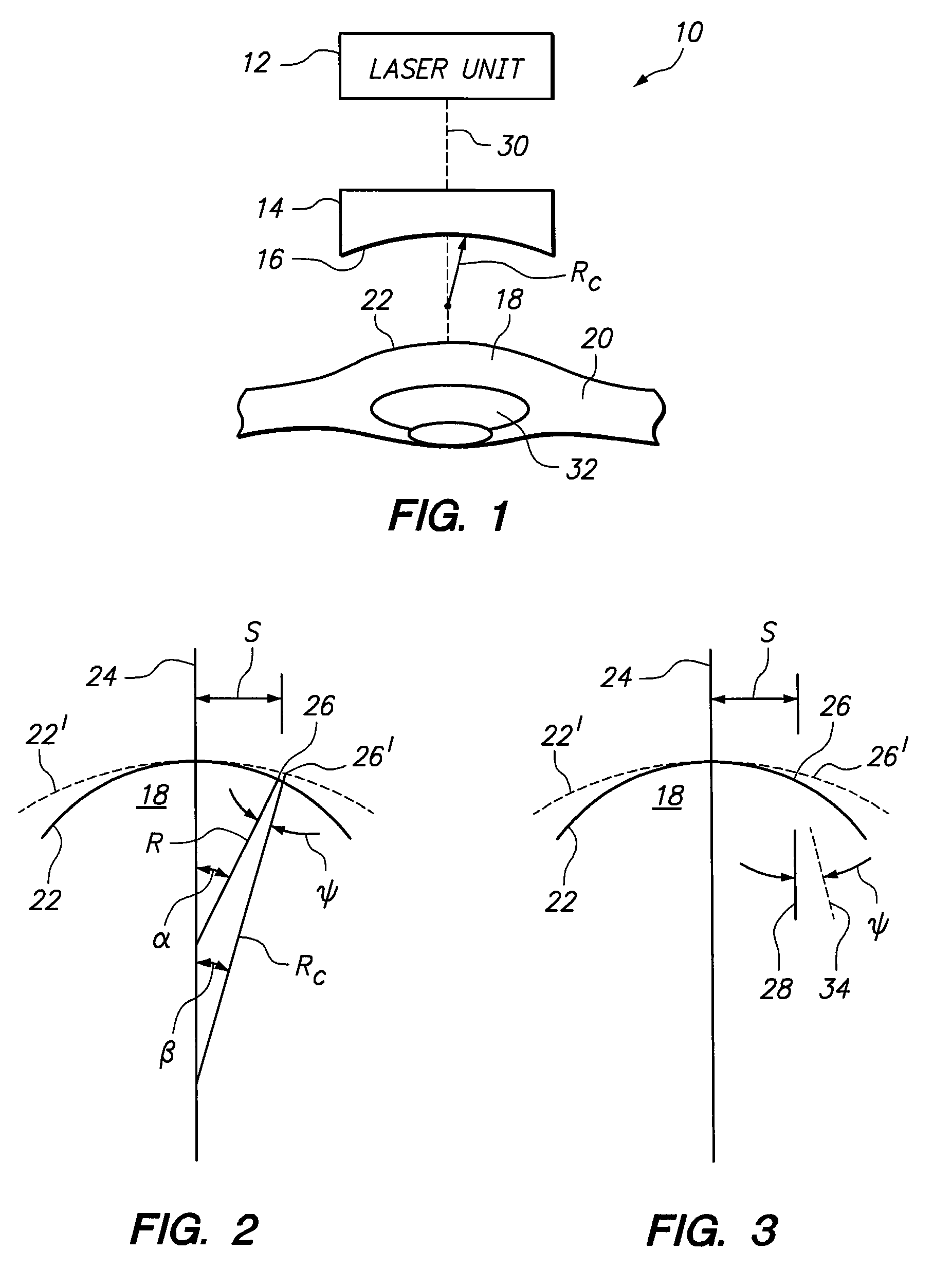System and method for stray light compensation of corneal cuts
a technology of laser surgery and compensation system, applied in laser surgery, surgery, medical science, etc., can solve the problems of unwanted visual sensation, stray light being generated, and introducing hazy or cloudy sensation into the patient's perceived visual image, so as to minimize stray light
- Summary
- Abstract
- Description
- Claims
- Application Information
AI Technical Summary
Benefits of technology
Problems solved by technology
Method used
Image
Examples
Embodiment Construction
[0019]Referring initially to FIG. 1, a system for minimizing stray light caused by LIOB of stromal tissue is shown and is generally designated 10. As shown, the system 10 includes a laser unit 12 and a contact lens 14. Also, the contact lens 14 is shown to have a contact surface 16 that is defined by its radius of curvature “Rc”. FIG. 1 also shows a cornea 18 of an eye 20 positioned for laser surgery. During this surgery, the contact lens 14 is positioned against the anterior surface 22 of the cornea 18 to stabilize the eye 20.
[0020]As envisioned for the present invention, when the contact surface 16 of contact lens 14 is positioned against the anterior surface 22 of the cornea 18, the cornea 18 becomes deformed. This effectively changes the curvature of the anterior surface 22. Specifically, this involves a change from the natural, anatomical radius of curvature “R” of the anterior surface 22 of the cornea 18 to the radius of curvature “Rc” of the contact lens 14. This deformation ...
PUM
 Login to View More
Login to View More Abstract
Description
Claims
Application Information
 Login to View More
Login to View More - R&D
- Intellectual Property
- Life Sciences
- Materials
- Tech Scout
- Unparalleled Data Quality
- Higher Quality Content
- 60% Fewer Hallucinations
Browse by: Latest US Patents, China's latest patents, Technical Efficacy Thesaurus, Application Domain, Technology Topic, Popular Technical Reports.
© 2025 PatSnap. All rights reserved.Legal|Privacy policy|Modern Slavery Act Transparency Statement|Sitemap|About US| Contact US: help@patsnap.com



